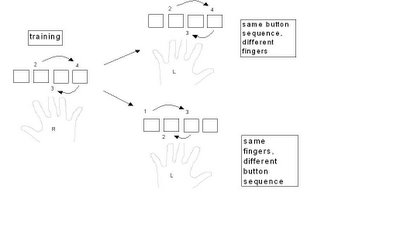
The days of finding Dutch courage in a quick drink before a stressful situation could soon be over – researchers have reported that a few sniffs of the hormone oxytocin can dampen the brain’s fear response to threatening images. The finding follows a report earlier this year showing oxytocin can increase people’s trust.
Peter Kirsch and colleagues at the
National Institute of Mental Health in America scanned the brains of 15 male participants while they looked at angry and scared faces, or threatening scenes, such as a gun pointed in their direction. In a control condition they looked at simple shapes. Before the brain scanning, half the participants took five sniffs of oxytocin, the other half sniffed a placebo. The experiment was double-blind, so during the procedure neither the participants nor the researchers knew who had sniffed oxytocin and who had sniffed placebo.
As expected, when the participants who sniffed placebo looked at threatening faces or scenes, activity in their amygdalae increased relative to when they looked at simple shapes. The amygdala is an almond-shaped structure located in the temporal lobe that is known to respond to danger. However, this fear-related brain activity was significantly reduced in the participants who had sniffed oxytocin, especially when they looked at the threatening faces, suggesting oxytocin may particularly dampen down social fear. Moreover, in the participants who’d inhaled placebo, functional connectivity was detected between the amygdala and brainstem regions involved in the flight or fight response, but this connectivity was significantly reduced in participants who’d inhaled oxytocin.
There was no difference in the way the placebo participants and oxytocin participants felt according to questionnaires they completed before and after the experiment. This suggests the effect of oxytocin only becomes noticeable to the user in an actual interactive situation.
Co-researcher Dr. Andreas Meyer-Lindenberg told
the Digest that oxytocin was soon to be tested as a short-term aid for people with social phobia. He said the side-effects, such as a possible head-ache, are weak, and that although the beneficial effects would be short-lived “that might be enough if you have a known stressor like a public speech”. Oxytocin would be “sort of a ‘social Viagra’, if you will” he said. He added that there was no evidence so far that oxytocin could lead to aggression or social disinhibition.
___________________________________
Kirsch, P., Esslinger, C., Chen, Q., Mier, D., Lis, S., Siddhanti, S., Gruppe, H., Mattay, V.S., Gallhofer, B. & Meyer-Lindenberg, A. (2005).
Oxytocin modulates neural circuitry for social cognition and fear in humans. The Journal of Neuroscience, 25, 11489-11493.
You have read this article Mental health /
Social
with the title December 2005. You can bookmark this page URL https://psychiatryfun.blogspot.com/2005/12/a-social-for-shy-people.html. Thanks!
 The Research Digest wishes all its readers a very Merry Christmas and Happy New Year. Hope you visit again in 2006!
The Research Digest wishes all its readers a very Merry Christmas and Happy New Year. Hope you visit again in 2006!













